
漢德百科全書 | 汉德百科全书
 Important port
Important port

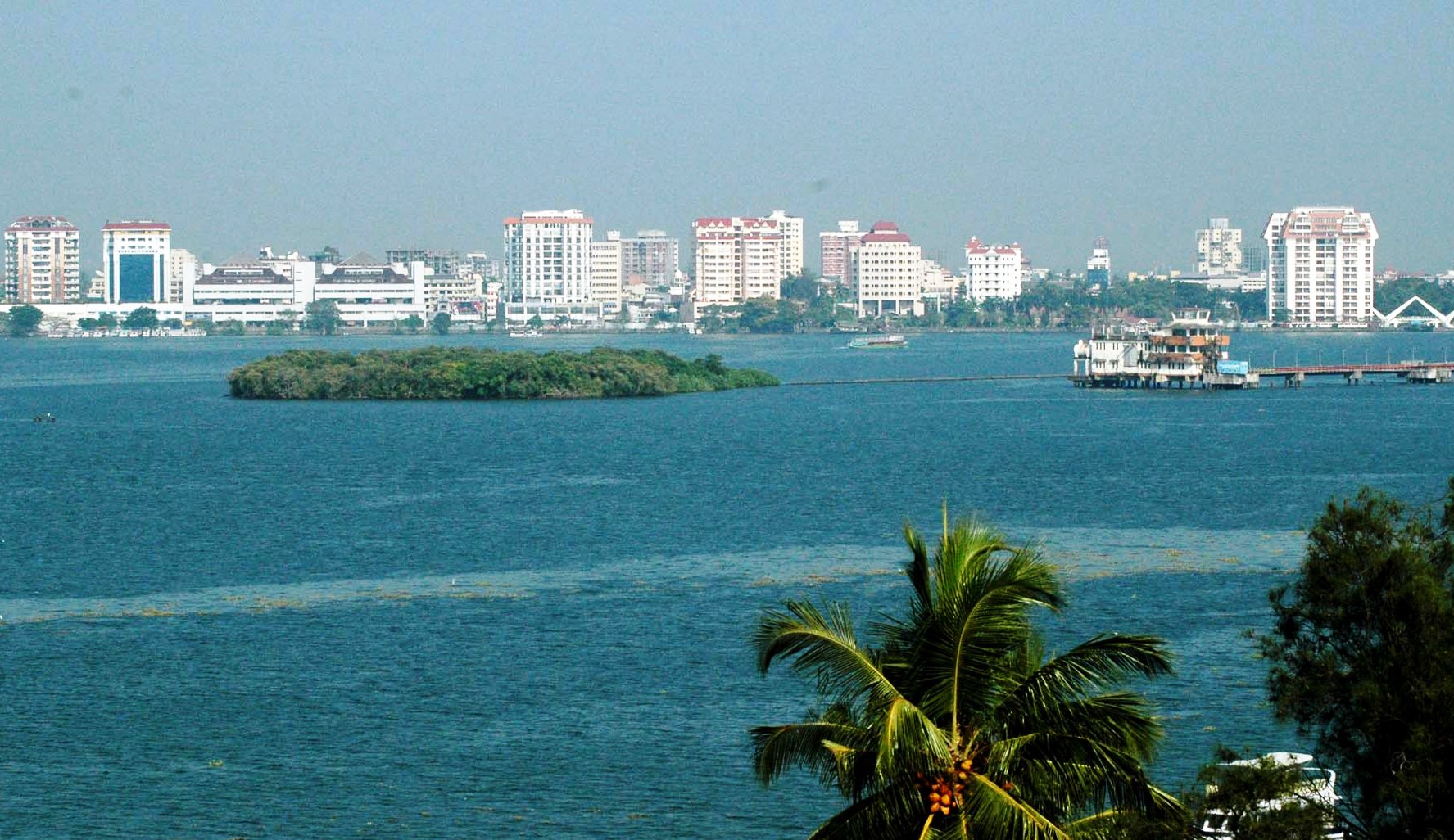




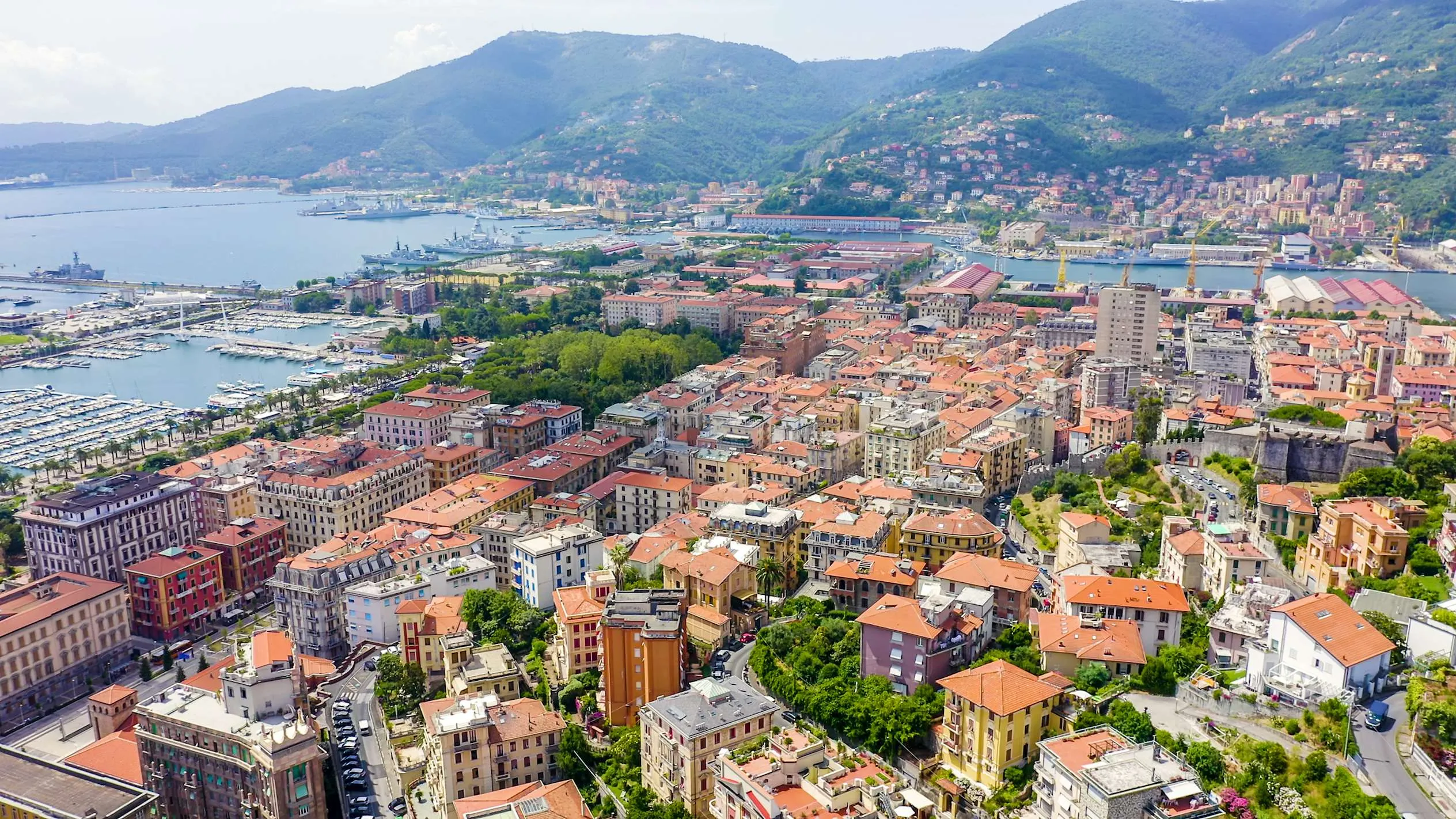
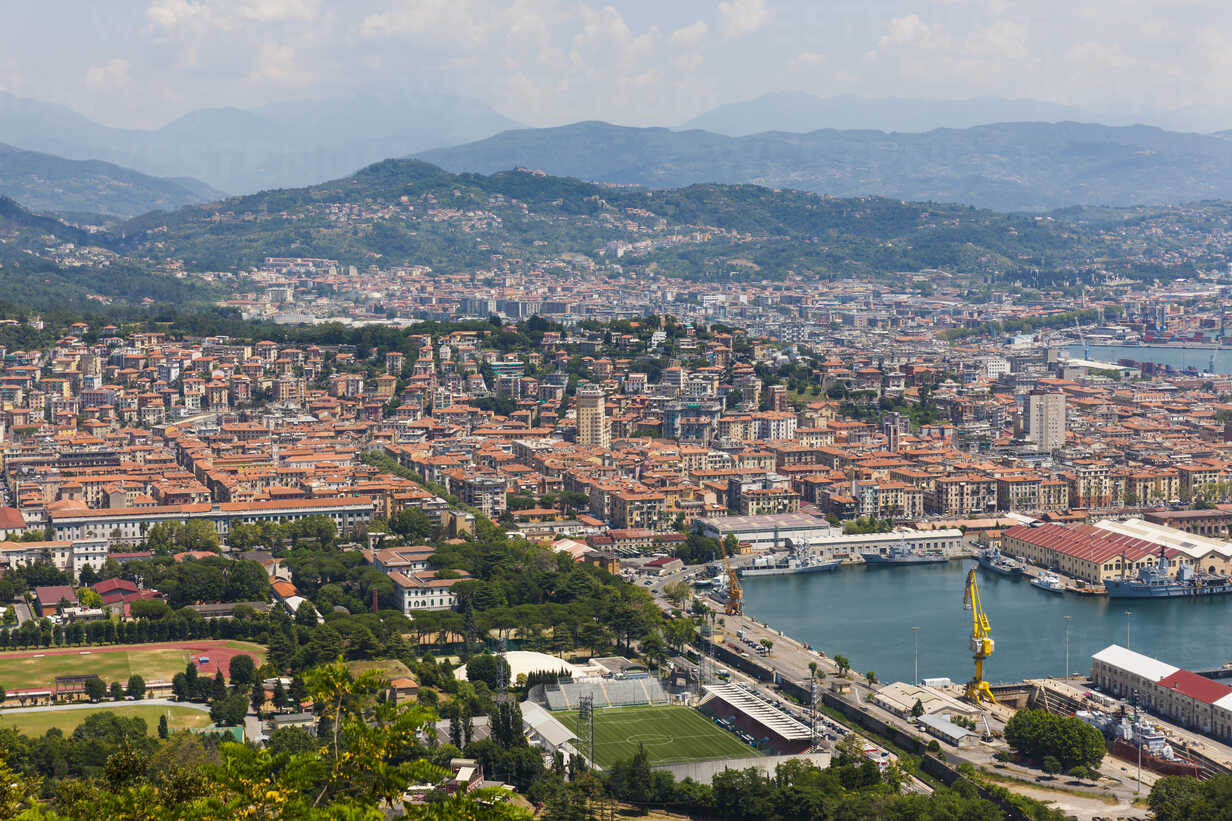
拉斯佩齐亚(意大利语:La Spezia)位于意大利利古里亚大区东南端,是拉斯佩齐亚省的首府,面积51.39平方公里,人口94,192人(2007年)。拉斯佩齐亚是意大利主要的军事和商业港口之一,意大利最大的军工企业之一奥托梅莱拉和意甲球队斯佩齐亚的主场都位于该地。
La Spezia (ligurisch Spèza) ist eine norditalienische Stadt in der Region Ligurien und Hauptstadt der gleichnamigen Provinz La Spezia. Mit 92.169 Einwohnern (Stand: 31. Dezember 2022) ist La Spezia die zweitgrößte Gemeinde der Region, nach der Regionalhauptstadt Genua.
Die Stadt liegt am östlichen Ende der Riviera di Levante und der Region Ligurien, wenige Kilometer von der Regionalgrenze zur Toskana entfernt. Sie liegt an einem tiefen Naturgolf, dem Golf von La Spezia, der auch unter dem Namen Golfo dei Poeti (zu deutsch: Golf der Poeten) bekannt ist. Dieser ist von einer Hügelkette umgeben, deren höchsten Punkt der Monte Parodi (673 Meter), westlich des Stadtzentrums, bildet. Das Gemeindegebiet stellt einen Teil der Verwaltungszone Autorità di Bacino Interregionale del Fiume Magra dar, und ein kleiner Abschnitt des Territoriums von La Spezia (die Siedlung Tramonti) gehört zum Nationalpark der Cinque Terre.
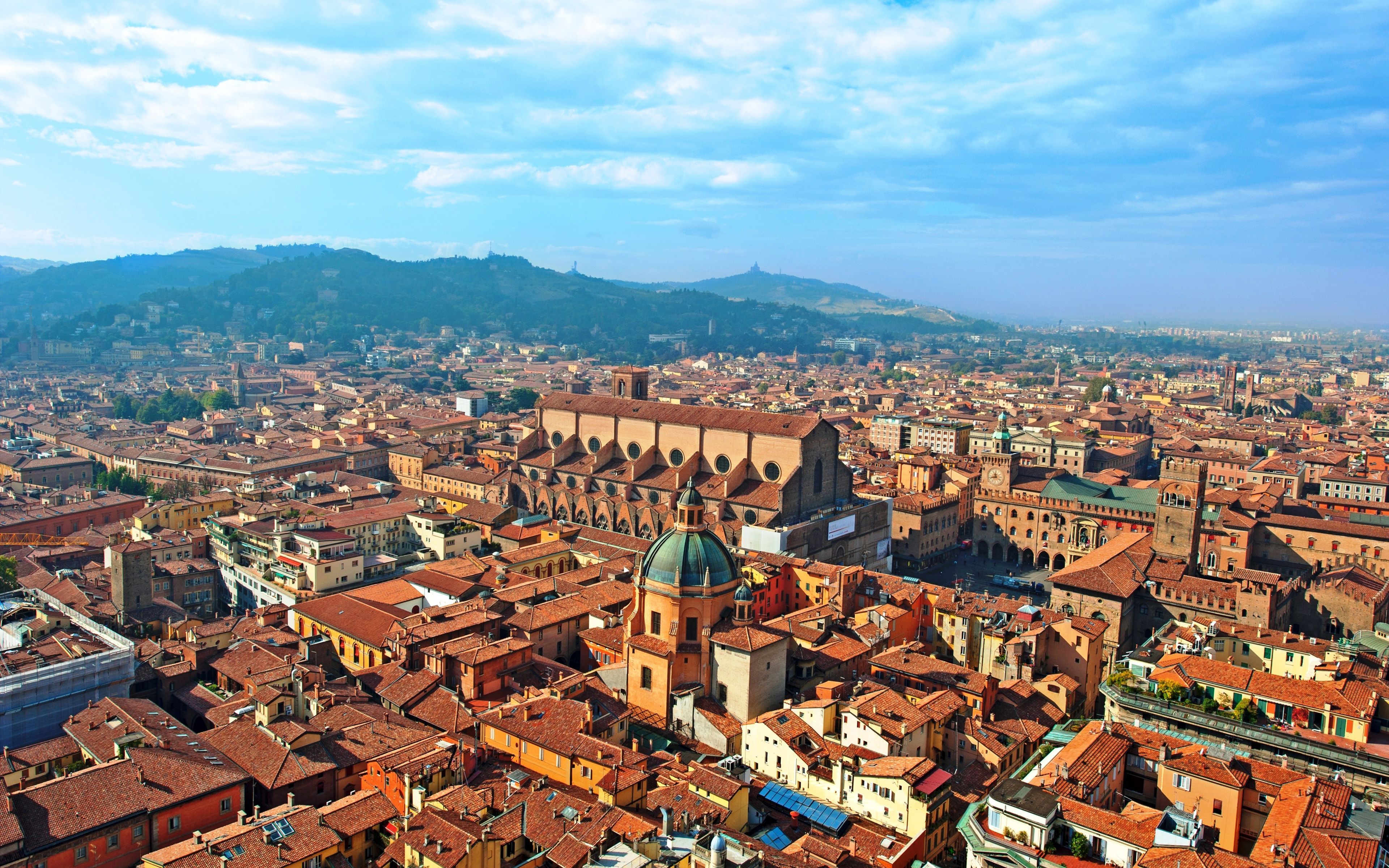
Ravenna ist eine Stadt in Italien mit 158.058 Einwohnern (Stand 31. Dezember 2019). Sie ist Hauptstadt der gleichnamigen Provinz Ravenna in der Region Emilia-Romagna. Die Stadt lag ursprünglich unmittelbar an der Adria. Infolge von Verlandung beträgt die Entfernung des Stadtkerns von der Küste heute etwa neun Kilometer. Der Hafen ist durch den Canale Candiano mit der Küste und dem Seebad Marina di Ravenna verbunden. Ravenna ist Erzbischofssitz.
Von 402 bis 476 war die Stadt Hauptresidenz der weströmischen Kaiser. In den folgenden Jahrzehnten residierten hier auch Odoaker, Theoderich der Große und dessen Nachfolger. Nach der Rückeroberung Italiens durch oströmische Truppen war Ravenna bis zur Einnahme durch die Langobarden im Jahre 751 Zentrum eines kaiserlichen Exarchats (Exarchat von Ravenna).
Seit 1974 richtet die Stadt jährlich im Frühjahr das Musikfestival Ravenna Jazz aus. 1990 kam das im Sommer abgehaltene Ravenna Festival hinzu, bei dem hauptsächlich Opern- und Klassische Musik, aber auch Dance, Jazz, Volksmusik, Musical, Ballett, Geistliche Musik, Elektronische Musik, Theater und Film dargeboten und ausgezeichnet werden, zusätzlich finden hier verschiedene Conventions und Ausstellungen statt.
现在的拉韦纳范围没有靠海,但以前拉韦纳曾是对亚得里亚海很重要的海港,同时也是罗马帝国还有早期中古世纪的行政中心。
拉韦纳是建在海岸潟湖的,此潟湖在十六世纪的地图上还有出现,而古城则有数条运河通过。拉韦纳曾帮罗马共和国抵抗高卢人,直到公元前一世纪拉韦纳在内战帮助马略为止,它一直是罗马共和国的同盟。苏拉后来把拉韦纳并吞到山南高卢省。拉韦纳也是罗马舰队重要的据点,它的港口还戴有拉丁文“罗马海军”(classis)的称号,有城墙保护自己。城墙的遗迹“罗马帝国海军金门”到了十六世纪才被打掉。当时城墙的柱子被当战利品分散在拉韦纳的基督教堂里,甚至有部分被送到威尼斯去。罗马时期的雕塑则用在洗者圣若翰堂当装饰。
在公元402年西罗马帝国霍诺留皇帝为了躲避哥特人首领阿拉里克的攻击,把住所从米兰改到拉韦纳。在霍诺留死后,他妹妹盖拉·普拉奇迪亚靠着她未成年的皇帝儿子瓦伦提尼安三世帮帝国掌管拉韦纳。从这时起城里开始兴建多数普拉奇迪亚自己想要盖异教的(后来都被摧毁了)以及关于基督教(多数保留)的纪念建筑物。
ラヴェンナ(イタリア語: Ravenna)は、イタリア共和国エミリア=ロマーニャ州にある人口約15万人の基礎自治体(コムーネ)。ラヴェンナ県の県都である。
古代ローマ時代から中世にかけて繁栄した都市で、ラテン語ではラウェンナ(Ravenna)と呼ばれる。西ローマ帝国や東ゴート王国が首都を置き、東ローマ帝国ラヴェンナ総督領の首府であった。「ラヴェンナの初期キリスト教建築物群」はユネスコの世界遺産に登録されている。
Ravenna (/rəˈvɛnə/ rə-VEN-ə, Italian: [raˈvenna], also locally [raˈvɛnna] (![]() listen); Romagnol: Ravèna) is the capital city of the Province of Ravenna, in the Emilia-Romagna region of Northern Italy. It was the capital city of the Western Roman Empire from 402 until the empire collapsed in 476. It then served as the capital of the Ostrogothic Kingdom until it was re-conquered in 540 by the Byzantine Empire. Afterwards, the city formed the centre of the Byzantine Exarchate of Ravenna until the invasion of the Lombards in 751. Although it is an inland city, Ravenna is connected to the Adriatic Sea by the Candiano Canal. It is known for its well-preserved late Roman and Byzantine architecture, with eight buildings comprising the UNESCO World Heritage Site "Early Christian Monuments of Ravenna".
listen); Romagnol: Ravèna) is the capital city of the Province of Ravenna, in the Emilia-Romagna region of Northern Italy. It was the capital city of the Western Roman Empire from 402 until the empire collapsed in 476. It then served as the capital of the Ostrogothic Kingdom until it was re-conquered in 540 by the Byzantine Empire. Afterwards, the city formed the centre of the Byzantine Exarchate of Ravenna until the invasion of the Lombards in 751. Although it is an inland city, Ravenna is connected to the Adriatic Sea by the Candiano Canal. It is known for its well-preserved late Roman and Byzantine architecture, with eight buildings comprising the UNESCO World Heritage Site "Early Christian Monuments of Ravenna".
Ravenne (italien : Ravenna /raˈvenna/, romagnol : Ravêna) est une ville italienne de la province de Ravenne en Émilie-Romagne. Elle est considérée comme la capitale mondiale de la mosaïque2.
Ravenne fut fondée par une colonie de Thessaliens, passa ensuite aux Étrusques, aux Sabins et aux Gaulois sénonais dits Sénons de Cisalpine. Elle tomba entre les mains des Romains en l'an 234 av. J.-C., et devint municipe.
C'est là que César avait l'habitude de prendre ses quartiers d'hiver, alors qu'il était proconsul des Gaules3. C'est de Ravenne, encore, qu'il partit pour franchir le Rubicon avec une partie de ses forces armées, le fleuve séparant la Gaule Cisalpine de l'Italie romaine4.
Disposant d'un port de bonne capacité à 3km (jusqu'à 250 navires), Ravenne fut une cité de première importance au tournant de l'Antiquité et du Moyen Âge5. C'est Auguste qui lance les travaux du port afin de permettre l'installation d'une flotte militaire5. En 402, pendant le règne d'Honorius, elle fut, du fait de sa position stratégique plus favorable, élevée au rang de capitale de l'Empire romain d'Occident en lieu et place de Milan, trop exposée aux attaques terrestres des Barbares. Son port de grande capacité, sur l'Adriatique, la mettait en communication aisée avec Constantinople, capitale de l'Empire romain d'Orient. La cité continua d'être le centre de l'Empire d'Occident jusqu'à la déposition de Romulus Augustule, dernier empereur, en 4766. Elle devint alors la capitale du royaume d'Italie d'Odoacre, puis à partir de 493 celle du royaume des Ostrogoths, sous Théodoric le Grand, qui englobait l'Italie, la Rhétie, la Dalmatie et la Sicile. En 540, sous le règne de Justinien, Ravenne fut conquise par le général de l'empire d'Orient Bélisaire ; elle fut ensuite reconquise par les Ostrogoths avant d'être à nouveau reprise par le général de l'empire d'Orient Narsès en 552.
C'est pour contrer le danger né de l'invasion des Lombards en Italie à partir de 568, que Ravenne devint le siège de l'exarchat byzantin d'Italie, par décision de l'empereur Maurice (cf. Exarchat de Ravenne). La concentration de tous les pouvoirs civils et militaires entre les mains de l'exarque, représentant personnel de l'empereur byzantin favorisa, à long terme, l'émancipation des territoires du Nord de l'Italie vis-à-vis du pouvoir impérial7.
Ravenne fut prise en 752 par Aistolf, roi des Lombards. Deux ans après, Pépin le Bref, roi des Francs, la lui enleva et la donna au Saint-Siège8.
En 1198, la cité prend la tête de la ligue des villes de Romagne soulevée contre le Roi des Romains Frédéric, et le pape parvint à se l'associer9. À l'issue de la guerre de 1218, la famille des Traversari s'imposa à la tête de la ville, et devait s'y maintenir jusqu'en 1240. Mise ensuite pendant quelques années sous la direction d'un vicaire impérial, Ravenne fut restituée aux États pontificaux en 1248 et confiée à l'autorité des Traversari jusqu'à ce qu'en 1275, la famille des Da Polenta prenne la direction des affaires. C'est au cours de ce siècle que Ravenne connut son plus fameux citoyen, le poète Dante. Ravenne fut soumise par Bologne, puis en 1440 le dernier podestat de la famille des Da Polenta, Ostasio III, fut chassé par la république de Venise, qui annexa la ville.
Après la bataille d'Agnadel en 1509, elle fut restituée au pape et devint la capitale de la Romagne. En 1512, les Français, commandés par Gaston de Foix-Nemours, y remportèrent sur les Espagnols et les troupes du pape Jules II une victoire éclatante.
L'archevêque de Ravenne était anciennement primat de l'Exarchat et prétendait rivaliser avec le pape ; mais, lors d'un concile tenu en 679, il fut obligé de renoncer publiquement à ses prétentions à l'indépendance. Ravenne fit partie du royaume d'Italie à partir de 1861.
Ravenna (/raˈvenna/, localmente e in Romagna anche /raˈvɛnna/[4]; , Ravèna in romagnolo) è un comune italiano di 157 724 abitanti[1], capoluogo dell'omonima provincia in Emilia-Romagna. È la città più grande e storicamente più importante della Romagna; il suo territorio comunale è il secondo in Italia per superficie (superato solo da quello di Roma) e comprende nove lidi della riviera romagnola.
Nella sua storia, è stata capitale tre volte: dell'Impero romano d'Occidente (402-476),[5] del Regno ostrogoto (493-540) e dell'Esarcato bizantino (584-751). Per le vestigia di questo luminoso passato, il complesso dei primi monumenti cristiani di Ravenna è inserito, dal 1996, nella lista dei siti italiani patrimonio dell'umanità dall'UNESCO, come sito seriale "Monumenti paleocristiani di Ravenna".
Nella seconda metà del XX secolo la città ha conosciuto un periodo di grande espansione. Alla crescita demografica si è affiancata una serie di progetti architettonici che si concentrano in particolare attorno al canale Candiano, che collega la città al mare Adriatico.
Ravena o Rávena2 (en italiano Ravenna) es una ciudad al norte de Italia en la Emilia-Romaña y la capital de la provincia homónima. Está situada en la llanura nororiental de la Romaña a pocos kilómetros del Mar Adriático. Tiene una población de 159 390 habitantes (2016).
Ravena es famosa por sus monumentos bizantinos y paleocristianos, que revelan su origen antiguo y su papel histórico en el desarrollo italiano. A 8 km de la ciudad se extienden los lidi ravennati, playas inmensas en el verde de la famosa costa romañola.
En Ravena se encuentra enterrado Dante Alighieri, autor de La divina comedia. A nivel deportivo, la ciudad es considerada como la cuna del voleibol en Italia.3


勒阿弗尔(法语:Le Havre,发音:[lə ɑvʁ] ( 聆听)),法国西北部城市,诺曼底大区滨海塞纳省的一个市镇,同时也是该省的一个副省会,下辖勒阿弗尔区[1],其市镇面积为46.95平方千米,2019年1月1日时人口数量为168,290人,是诺曼底大区人口最多的市镇,在所有法国城市中排名第15位。
聆听)),法国西北部城市,诺曼底大区滨海塞纳省的一个市镇,同时也是该省的一个副省会,下辖勒阿弗尔区[1],其市镇面积为46.95平方千米,2019年1月1日时人口数量为168,290人,是诺曼底大区人口最多的市镇,在所有法国城市中排名第15位。
勒阿弗尔位于滨海塞纳省西部,塞纳河口北岸,始建于1517年,距离法国首都巴黎约200千米,通常被认作“巴黎外港”,在航空普及和英法海底隧道建成以前,勒阿弗尔是西欧大陆连接英国及美洲的重要通商口岸。现代则为一个区域性的工业城市和交通枢纽,亦是法国大西洋沿岸最大的港口城市,其港口吞吐量在法国排名第二,仅次于马赛[2]。勒阿弗尔在第二次世界大战中被严重破坏,战后进行了大规模的重建和复原,其中心城区于2005年被列入《世界文化遗产》。
Le Havre [ləˈɑːvʀ] ist eine Stadt im Nordwesten Frankreichs am Ärmelkanal im Département Seine-Maritime in der Region Normandie.
Die Einwohner nennt man im Französischen Havrais. Le Havre, am rechten Ufer der Seinemündung liegend, ist nach Marseille Standort des zweitgrößten Hafens Frankreichs (→ Hafen Le Havre). Le Havre ist die größte Stadt der Normandie.
Die Stadt wurde nach den schweren Zerstörungen im Zweiten Weltkrieg nach Plänen des Architekten Auguste Perret mit einem Team von 60 Architekten von 1945 bis 1954 wieder aufgebaut. Der Stadtkern mit einer charakteristischen farbigen Betonarchitektur ist eines von zwei (neben Brasília) Stadtensembles des 20. Jahrhunderts in der Liste des UNESCO-Welterbes (Juli 2005).
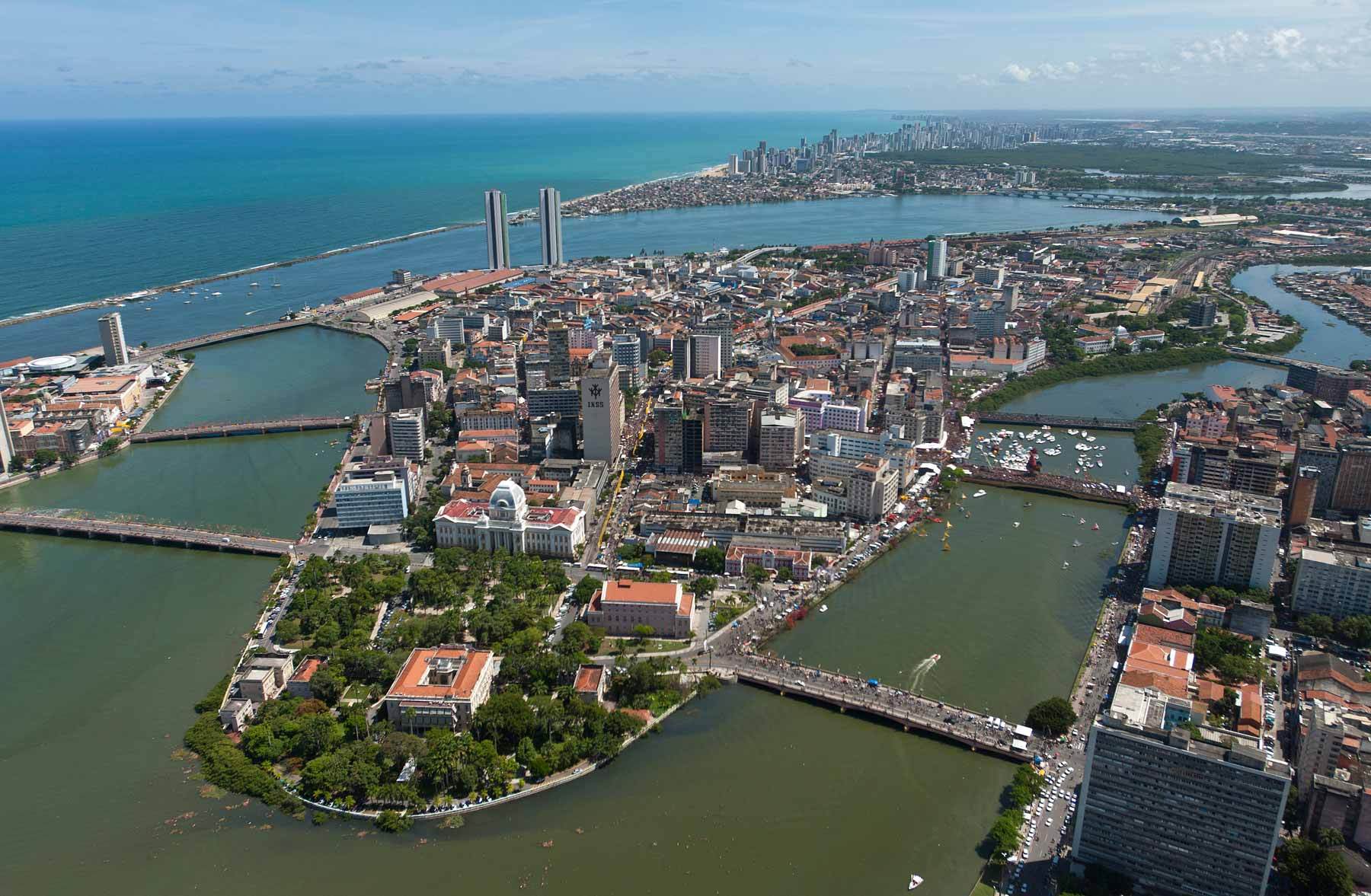
 Brazil
Brazil
 FIFA Fussball-Weltmeisterschaft 2014
FIFA Fussball-Weltmeisterschaft 2014
 Olympic Summer Games
Olympic Summer Games
 Rio de Janeiro
Rio de Janeiro
 Silk road
Silk road

 Important port
Important port

Rio de Janeiro [ˈʁi.u d(ʒi) ʒɐˈne(j)ɾu, ˈʁi.u d(ʑi) ʑɐˈne(j)ɾu] ist nach São Paulo die zweitgrößte Stadt Brasiliens und Hauptstadt des gleichnamigen Bundesstaates. Sie liegt an der Guanabara-Bucht im Südosten des Landes. Der Name (deutsch Fluss des Januar) beruht auf einem Irrtum des Seefahrers Gaspar de Lemos, der die Bucht am 1. Januar 1502 entdeckte und für die Mündung eines großen Flusses hielt. Im administrativen Stadtgebiet leben rund 6,7 Millionen Menschen (Schätzung 2018).[1] Die Metropolregion Rio de Janeiro hat rund 13,3 Millionen Einwohner (Schätzung 2018).[2] Somit gehört Rio de Janeiro zu den Megastädten dieser Erde.
Von 1815 bis 1821 war Rio de Janeiro Hauptstadt des Königreiches von Portugal und Brasilien und nach der Unabhängigkeit Brasiliens 1822 bis 1960 die Hauptstadt des Landes. Danach trat sie diese Funktion an Brasília ab, bleibt aber nach São Paulo bedeutendstes Handels- und Finanzzentrum des Landes. Von 1808 bis 1822 war die Stadt auch Sitz des portugiesischen Hofes, der wegen eines Angriffs durch Napoleon Bonaparte nach Brasilien flüchten musste. Die Bewohner der Stadt nennt man Cariocas, nach einem Wort aus der zum Tupí-Guaraní gehörenden Sprache der Tupinambá, welches „Hütte des weißen Mannes“ bedeutet.
Wahrzeichen von Rio de Janeiro sind der Zuckerhut, die 38 Meter hohe Christusfigur auf dem Gipfel des Corcovados und der Strand des Stadtteils Copacabana, der als einer der berühmtesten der Welt gilt. Die Stadt ist auch bekannt wegen des jährlich stattfindenden Karnevals von Rio. Die bunte Parade der Sambaschulen gehört zu den größten Paraden der Welt.
里约热内卢位于巴西国土的东南部,坐落在美丽的瓜纳巴拉海湾,依山傍水,风景优美,是巴西和世界著名的旅游观光胜地。面积4.36万平方公里。人口 1,413.3万(1990),城市人口占90%以上。1889年设州,1975年瓜纳巴拉州并入,首府由尼泰罗伊迁至里约热内卢市。沿海低地气候湿热, 内地高原气候温和。重要河流有帕拉伊巴河等。工农业和服务业均甚发达,服务业占就业人口约37%和收入的一半。工业以钢铁、纺织、食品、印刷、石油化工为 主。有石油、铝土、铁、煤、大理石等矿产。渔业和盐业兴盛。农业主产甘蔗、柑橘、香蕉、蔬菜、棉花、水果、稻,饲养牲畜。水、陆、空交通发达。风景优美, 多游览胜地。
(Quelle: http://www.uutuu.com)
里约热内卢(葡萄牙语:Rio de Janeiro,葡萄牙语发音:[ˈʁi.u dʒi ʒɐˈnejɾu],意即“一月的河”),有时仅简称为里约(Rio),是位于巴西东南部的城市,为里约热内卢州首府,同时是巴西第二大城,仅次于圣保罗。面积1,256平方公里,人口6,094,183人(2005年)。其自1822年巴西建国以来一直为首都,至1960年4月21日迁都巴西利亚为止,更曾经成为前宗主国葡萄牙在本土被拿破仑入侵时(1808年–1821年)的流亡首都[3]。风景优美,每年吸引大量游客到此观光,市内的里约热内卢港是世界三大天然良港之一,而里约热内卢基督像也是世界新七大奇迹之一。其亦为第31届夏季奥运的主办地,是第一座举办夏季奥运的南美洲城市。
リオ・デ・ジャネイロ(葡: Rio de Janeiro, ブラジルポルトガル語発音: ヒウ・ヂ・ジャネイル)は、ブラジル南東部に位置するリオデジャネイロ州の州都。世界有数のメガシティであり、国内最大の観光都市である。港湾都市としても知られる。
人口は600万人を超え、サンパウロに次いでブラジル第2位にランクされる。経済規模(域内総生産)でもサンパウロに次いで第2位にあり、アメリカのシンクタンクが公表したビジネス・人材・文化・政治などを対象とした総合的な世界都市ランキングにおいて、世界第56位、国内ではサンパウロに次ぐ第2位の都市と評価された[1]。都市周辺の美しい文化的景観は「リオデジャネイロ:山と海との間のカリオカの景観群」として、2012年に世界遺産リストに登録された。2016年の第31回夏季オリンピックの開催都市である。
カーニバルで有名。コパカバーナ、イパネマ(英語版)などの世界的に有名な海岸を有し世界3大美港の一つに数えられる美しい都市である。都市のGDPは2010億ドルであり世界第30位、南米ではサンパウロ、ブエノスアイレスに次ぎ第3位である[2]。
1960年にブラジリアに遷都するまではブラジルの首都であった。また、1808年にナポレオンに本国領土を奪われたポルトガル王室が遷都してからブラジルが独立するまではポルトガルの首都であった。また、中南米有数の貿易港でもあるためにブラジルの経済的な中心地でもあった。近年は経済の中心地はサンパウロに移り、その地位が低下しているものの、依然として中南米有数の経済都市である。また、ブラジルのみならず世界でも有数の観光地としても、ショーロ、ボサノヴァを生んだ音楽の都としても名高い。
Rio de Janeiro (/ˈriːoʊ di ʒəˈnɛəroʊ, - deɪ -, - də -/; Portuguese: [ˈʁi.u d(ʒi) ʒɐˈne(j)ɾu];[3] River of January), or simply Rio,[4] is anchor to the Rio de Janeiro metropolitan area and the second-most populous municipality in Brazil and the sixth-most populous in the Americas. Rio de Janeiro is the capital of the state of Rio de Janeiro, Brazil's third-most populous state. Part of the city has been designated as a World Heritage Site, named "Rio de Janeiro: Carioca Landscapes between the Mountain and the Sea", by UNESCO on 1 July 2012 as a Cultural Landscape.[5]
Founded in 1565 by the Portuguese, the city was initially the seat of the Captaincy of Rio de Janeiro, a domain of the Portuguese Empire. Later, in 1763, it became the capital of the State of Brazil, a state of the Portuguese Empire. In 1808, when the Portuguese Royal Court transferred itself from Portugal to Brazil, Rio de Janeiro became the chosen seat of the court of Queen Maria I of Portugal, who subsequently, in 1815, under the leadership of her son, the Prince Regent, and future King João VI of Portugal, raised Brazil to the dignity of a kingdom, within the United Kingdom of Portugal, Brazil, and Algarves. Rio stayed the capital of the pluricontinental Lusitanian monarchy until 1822, when the War of Brazilian Independence began. This is one of the few instances in history that the capital of a colonising country officially shifted to a city in one of its colonies. Rio de Janeiro subsequently served as the capital of the independent monarchy, the Empire of Brazil, until 1889, and then the capital of a republican Brazil until 1960 when the capital was transferred to Brasília.
Rio de Janeiro has the second largest municipal GDP in the country,[6] and 30th largest in the world in 2008,[7] estimated at about R$343 billion (IBGE, 2008) (nearly US$201 billion). It is headquarters to Brazilian oil, mining, and telecommunications companies, including two of the country's major corporations – Petrobras and Vale – and Latin America's largest telemedia conglomerate, Grupo Globo. The home of many universities and institutes, it is the second-largest center of research and development in Brazil, accounting for 17% of national scientific output according to 2005 data.[8] Despite the high perception of crime, the city has a lower incidence of crime than Northeast Brazil, but it is far more criminalized than the south region of Brazil, which is considered the safest in the country.[9]
Rio de Janeiro is one of the most visited cities in the Southern Hemisphere and is known for its natural settings, Carnival, samba, bossa nova, and balneario beaches[10] such as Barra da Tijuca, Copacabana, Ipanema, and Leblon. In addition to the beaches, some of the most famous landmarks include the giant statue of Christ the Redeemer atop Corcovado mountain, named one of the New Seven Wonders of the World; Sugarloaf Mountain with its cable car; the Sambódromo (Sambadrome), a permanent grandstand-lined parade avenue which is used during Carnival; and Maracanã Stadium, one of the world's largest football stadiums. Rio de Janeiro was the host of the 2016 Summer Olympics and the 2016 Summer Paralympics, making the city the first South American and Portuguese-speaking city to ever host the events, and the third time the Olympics were held in a Southern Hemisphere city.[11] The Maracanã Stadium held the finals of the 1950 and 2014 FIFA World Cups, the 2013 FIFA Confederations Cup, and the XV Pan American Games.
Rio de Janeiro [ˈʁi.u d(ʒi) ʒɐˈnejɾu]2, souvent désignée simplement sous le nom de Rio, est la deuxième plus grande ville du Brésil après São Paulo. Située au sud-est du pays, elle est la capitale de l'État de Rio de Janeiro. Avec ses 6,1 millions d'habitants intra-muros (communément appelés Cariocas, la variante Carioques existant aussi en français) et 12,62 millions dans l'aire urbaine, Rio de Janeiro est l'une des métropoles les plus importantes du continent américain.
Elle est mondialement connue pour son carnaval, ses plages (Copacabana, Leblon et Ipanema) ainsi que sa statue du Christ Rédempteur au sommet du Corcovado. Elle fut capitale du Royaume-Uni de Portugal, du Brésil et des Algarves, à la suite de la fuite de la cour portugaise lors de l'invasion des troupes napoléoniennes (1808-1821), puis de l'Empire du Brésil (1822-1889), de la República Velha (1889-1930), de l’Estado Novo (1937-1945) et du début de la Deuxième République jusqu'en 1960.
La ville a accueilli les Journées mondiales de la jeunesse 2013, la finale de la Coupe du monde de football de 2014 et enfin, en 2016, les Jeux olympiques d'été.
Rio de Janeiro (pron. [ˈrio deʒaˈnɛiro];[2] letteralmente "Fiume di gennaio" in portoghese) è una città del Brasile, capitale dell'omonimo stato confederato. Rio è la seconda città del Brasile dopo San Paolo e fu la capitale dello Stato federale dal 1763 fino al 1960, dopo Salvador da Bahia e prima di Brasilia.
La città è famosa per le sue attrattive turistiche tra cui spiccano le spiagge di Copacabana e Ipanema, la gigantesca statua liberty del Cristo Redentore, situata sul monte del Corcovado, il monte del Pão de Açúcar (Pan di Zucchero), con la sua funivia, e il suo annuale carnevale, il più celebre al mondo.
La città è al centro della scena internazionale, avendo ospitato alcuni dei più grandi eventi mondiali degli ultimi anni: nel 2007 i XV Giochi Panamericani, nel 2013 la XXVIII Giornata Mondiale della Gioventù e nel 2016 i giochi della XXXI Olimpiade. È stata inoltre una delle città in cui si è disputato il Campionato del mondo di calcio 2014.
Rio de Janeiro contiene anche la più grande foresta all'interno di un'area urbana, la foresta di Tijuca.
L'attuale sindaco è Marcelo Crivella, in carica dal 1º gennaio 2017, del PRB.
Río de Janeiro1 (en portugués, Rio de Janeiro, AFI: [ˈʁi.u dʒi ʒaˈnejɾu]), fundada como São Sebastião do Rio de Janeiro,3 es una ciudad, municipio brasileño y capital del estado homónimo, ubicada en el sureste del país. Es la segunda ciudad más poblada del país después de São Paulo.4
Fue la capital del Reino de Portugal entre 1808 y 1822 y la capital del Imperio del Brasil desde 1822, cuando la nación declaró su independencia del país luso y conservó ese rango hasta la inauguración de Brasilia, en 1960.
Es uno de los principales centros económicos, de recursos culturales y financieros del Brasil. Es conocida internacionalmente por sus iconos culturales y paisajes, como el Pan de Azúcar, la estatua del Cristo Redentor (una de las siete maravillas del mundo moderno), las playas de Copacabana e Ipanema, el Estadio de Maracaná, el Parque Nacional de Tijuca (el mayor bosque urbano del mundo), la Quinta da Boa Vista, la isla de Paquetá, las Fiestas de Fin de Año en Copacabana y la celebración del Carnaval
Representa el segundo mayor PIB en el país y 30.º mayor del mundo, además de ser sede de dos de las más importantes empresas brasileñas —Petrobras y Vale do Rio Doce, ahora privatizada— y las principales empresas de petróleo y la telefonía, así como del mayor conglomerado de compañías de medios y comunicaciones de Latinoamérica.[cita requerida] Es el segundo centro más grande de investigación y desarrollo en Brasil, alcanzando el 17% de la producción científica nacional (según datos de 2005).
Río de Janeiro es considerada una ciudad global Beta- por el inventario de 2008 de la Universidad de Loughborough (GaWC).5
Es conocida mundialmente como la "Ciudad Maravillosa" (Cidade Maravilhosa), en portugués, albergó la Copa Mundial de Fútbol de 1950, la Copa Confederaciones 2013, la Jornada Mundial de la Juventud 2013, la Copa Mundial de Fútbol de 2014 y los Juegos Olímpicos de Río de Janeiro 2016.
Ри́о-де-Жане́йро, или, сокращённо, Рио (порт. Rio de Janeiro, буквально — январская река) — город в Бразилии, административный центр одноимённого штата.
Население — 6,4 млн человек (2014), это второй по величине город страны и четвёртый Южной Америки. Образует агломерацию с населением 12 млн человек (2011 год)[6]. Крупный финансовый центр и морской порт на континенте, научный центр.
Расположен на берегу залива Гуанабара Атлантического океана, на узкой равнине, зажатой с двух сторон горами и морем. Климат тропический[1][2]. Местность открыта португальским мореплавателем Гашпаром ди Лемушем, принявшим залив Гуанабара за реку, которую назвали Январской рекой[уточнить]. В 1531 году основан португальский форт Сан-Себастьян де-Рио-де-Жанейро. С 1763 — столица вице-королевства Бразилии, с 1822 года — столица независимой Бразильской империи, в 1889—1960 годы — столица республики Соединённых штатов Бразилии.
Исторический центр с постройками XVI—XIX веков. Побережье вместе с пляжем Копакабана, горой Сахарная Голова и статуей Христа внесено в список Всемирного наследия ЮНЕСКО[7].
 Eurovision Song Contest,ESC
Eurovision Song Contest,ESC
 Hansestadt
Hansestadt

 International cities
International cities
 *European Capital of Culture
*European Capital of Culture
 Latvia
Latvia
 Silk road
Silk road

 World Heritage
World Heritage

 Important port
Important port
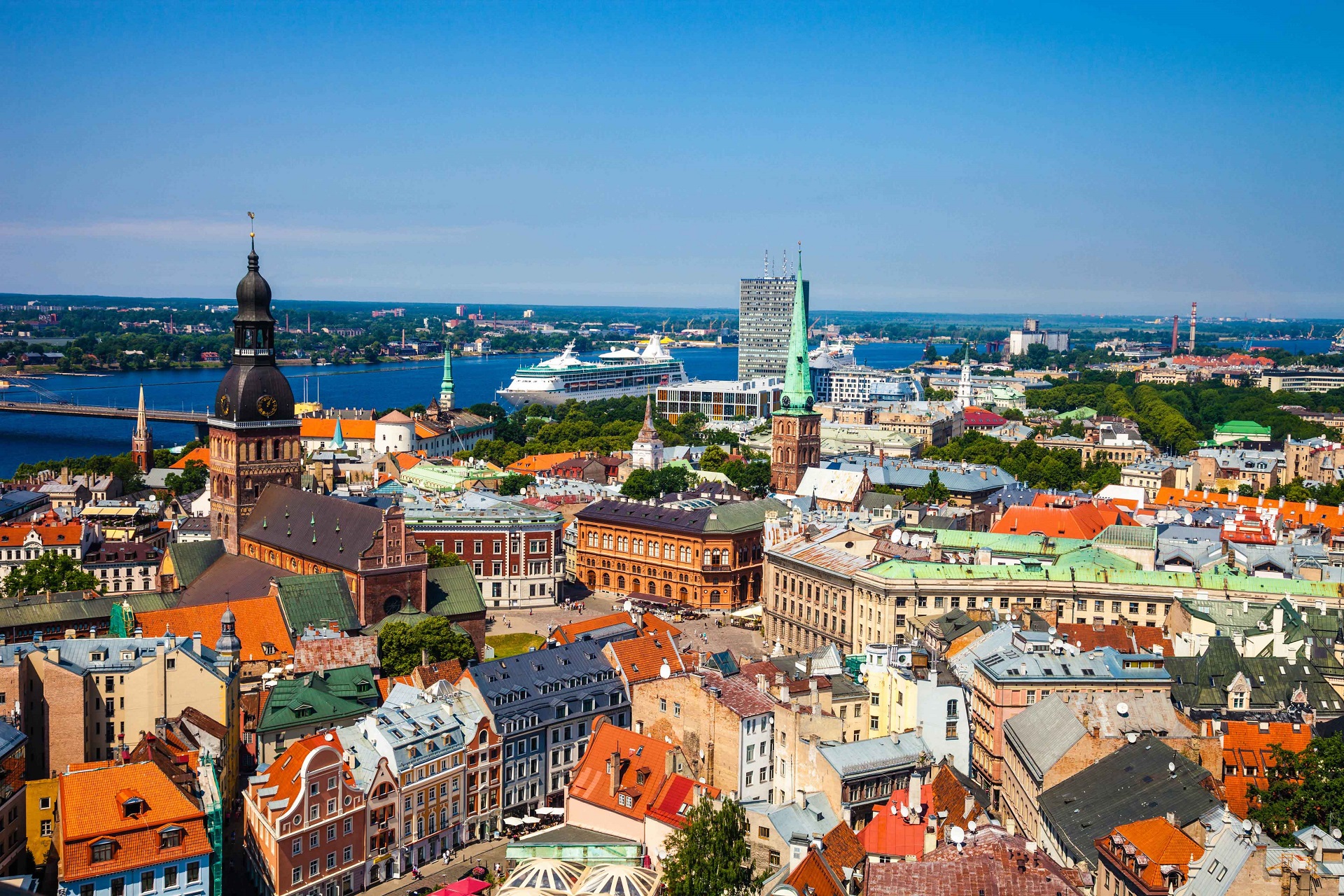
Riga (lettisch Rīga) ist die Hauptstadt Lettlands und mit rund 700.000 Einwohnern größte Stadt des Baltikums. Mit etwa einer Million Einwohnern in der Agglomeration ist Riga zudem der größte Ballungsraum in den drei baltischen Staaten. Riga ist politisches, wirtschaftliches und kulturelles Zentrum des Landes. Die alte Hansestadt ist berühmt für ihre Jugendstilbauten und ihre großzügige Anlage sowie für die gut erhaltene Innenstadt, darunter besonders die Altstadt. 2016 wurde Riga der Ehrentitel „Reformationsstadt Europas“ durch die Gemeinschaft Evangelischer Kirchen in Europa verliehen.[1]
里加(拉脱维亚语:Rīga, 英语:Riga)是拉脱维亚的首都,北欧地区波罗的海国家中最大、最繁忙的城市,位于波罗的海岸边,道加瓦河口。
里加是波罗的海国家主要的政治、经济、文化、教育和工商业中心。里加是历史上汉萨同盟主要商业城市,其历史中心被列入世界遗产名录,联合国教科文组织特别认为里加丰富的新艺术运动建筑是世界上独一无二的[2]。
欧盟欧洲电子通讯监管机构总部以及北大西洋公约组织的战略通讯中心设在里加。里加是欧洲城市组织及欧洲首都联盟组织成员。2014年欧洲文化之都,世界合唱比赛,2006年北大西洋公约组织峰会,2003年欧洲歌唱大赛,2006年世界男子冰球锦标赛,2003年世界女子冰壶球锦标赛等活动的举办地。
リガ、またはリーガ[1](ラトビア語: Rīga 発音 [ˈriːɡa] (![]() 音声ファイル)、ロシア語: Рига、エストニア語: Riia、リトアニア語: Ryga、英語、ドイツ語: Riga)は、ラトビア共和国の首都で、同国最大の人口を擁する都市。人口は69万9,203人(2012年時点)。「バルト海の真珠」と讃えられる美しい港町で、その旧市街はユネスコの世界遺産(文化遺産)に登録されている。 世界遺産に登録されている旧市街「リガ歴史地区」は約300棟のアールヌーボー調の建築物の宝庫として著名である。新市街は官庁やオフィスが集まる。郊外には、ラトビア民俗博物館があり、野外博物館も兼ねている。また、保養地として知られる海岸、ユールマーラも西方にある。人口約70万人のリガ市はラトビア国内はもとより、バルト三国最大の都市でもある。市内で最も高い建築物はリガラジオ&テレビタワーである。
音声ファイル)、ロシア語: Рига、エストニア語: Riia、リトアニア語: Ryga、英語、ドイツ語: Riga)は、ラトビア共和国の首都で、同国最大の人口を擁する都市。人口は69万9,203人(2012年時点)。「バルト海の真珠」と讃えられる美しい港町で、その旧市街はユネスコの世界遺産(文化遺産)に登録されている。 世界遺産に登録されている旧市街「リガ歴史地区」は約300棟のアールヌーボー調の建築物の宝庫として著名である。新市街は官庁やオフィスが集まる。郊外には、ラトビア民俗博物館があり、野外博物館も兼ねている。また、保養地として知られる海岸、ユールマーラも西方にある。人口約70万人のリガ市はラトビア国内はもとより、バルト三国最大の都市でもある。市内で最も高い建築物はリガラジオ&テレビタワーである。
Riga (/ˈriːɡə/; Latvian: Rīga [ˈriːɡa] ( listen), Livonian: Rīgõ) is the capital and largest city of Latvia. With 641,481 inhabitants (2016),[4] it is also the largest city in the three Baltic states, home to one third of Latvia's population and one tenth of the three Baltic states' combined population.[9] The city lies on the Gulf of Riga, at the mouth of the Daugava. Riga's territory covers 307.17 km2 (118.60 sq mi) and lies 1–10 m (3 ft 3 in–32 ft 10 in) above sea level,[10] on a flat and sandy plain.[10]
listen), Livonian: Rīgõ) is the capital and largest city of Latvia. With 641,481 inhabitants (2016),[4] it is also the largest city in the three Baltic states, home to one third of Latvia's population and one tenth of the three Baltic states' combined population.[9] The city lies on the Gulf of Riga, at the mouth of the Daugava. Riga's territory covers 307.17 km2 (118.60 sq mi) and lies 1–10 m (3 ft 3 in–32 ft 10 in) above sea level,[10] on a flat and sandy plain.[10]
Riga was founded in 1201 and is a former Hanseatic League member. Riga's historical centre is a UNESCO World Heritage Site, noted for its Art Nouveau/Jugendstil architecture and 19th century wooden architecture.[11] Riga was the European Capital of Culture during 2014, along with Umeå in Sweden. Riga hosted the 2006 NATO Summit, the Eurovision Song Contest 2003, the 2006 IIHF Men's World Ice Hockey Championships and the 2013 World Women's Curling Championship. It is home to the European Union's office of European Regulators for Electronic Communications (BEREC).
In 2016, Riga received over 1.4 million visitors.[12] It is served by Riga International Airport, the largest and busiest airport in the Baltic states. Riga is a member of Eurocities,[13] the Union of the Baltic Cities (UBC)[14] and Union of Capitals of the European Union (UCEU).[15]
Riga (prononcé [ʁi.ga] ; en letton Rīga [riː.ga]) est la capitale de la Lettonie. Construite sur la mer Baltique au fond du golfe de Riga, dans lequel se jette la Daugava, c'est un centre industriel, commercial, culturel et financier majeur de la région de Vidzeme.
Riga (in lettone Rīga) è la capitale della Lettonia. Situata sul Mar Baltico alla foce del fiume Daugava, con 699.203 abitanti al censimento del 2011, è la città più grande delle Repubbliche Baltiche ed è uno dei principali centri culturali, politici ed economici della regione. Antico centro della lega anseatica, la città è gemellata con Firenze e Brema. Nel 2001 ha ospitato il Mese culturale europeo assieme a Basilea, mentre nel 2014 è stata Capitale europea della cultura affiancata ad Umeå.
Riga (en letón: Rīga  [ˈriːɡa] (?·i)) es la capital y la mayor ciudad de Letonia. Es la ciudad más grande de los Estados bálticos y el hogar de más de un tercio de la población de Letonia.1 Es el mayor centro cultural, educativo, político, financiero, comercial e industrial de la región del mar Báltico.
[ˈriːɡa] (?·i)) es la capital y la mayor ciudad de Letonia. Es la ciudad más grande de los Estados bálticos y el hogar de más de un tercio de la población de Letonia.1 Es el mayor centro cultural, educativo, político, financiero, comercial e industrial de la región del mar Báltico.
La ciudad se encuentra en el golfo de Riga, en la desembocadura del río Daugava. Tiene un área de 307,17 km² y se encuentra en una llanura arenosa entre 1 y 10 metros sobre el nivel del mar.2
Riga fue fundada en 1201 y es un antiguo miembro de la Liga Hanseática. El centro histórico de Riga, declarado Patrimonio de la Humanidad por la Unesco, destaca por su arquitectura art nouveau y sus construcciones de madera del siglo XIX.3 La ciudad fue designada Capital Europea de la Cultura en 2014, junto a Umeå en Suecia.
La ciudad está comunicada por vía aérea gracias al Aeropuerto Internacional de Riga, el aeropuerto más grande de los países bálticos.
Riga es miembro de Eurocities,4 la unión de las ciudades bálticas (UBC)5 y la Unión de Capitales de la Unión Europea (UCEU).6
Ри́га (латыш.  Rīga [ˈriːɡa], лив. Rīgõ) — столица Латвии и самый крупный город в Прибалтике с численностью населения 637 971 человека (2018 год)[2]. Политический, экономический и культурный центр страны. Находится на обоих берегах реки Даугавы, недалеко от её впадения в Рижский залив.
Rīga [ˈriːɡa], лив. Rīgõ) — столица Латвии и самый крупный город в Прибалтике с численностью населения 637 971 человека (2018 год)[2]. Политический, экономический и культурный центр страны. Находится на обоих берегах реки Даугавы, недалеко от её впадения в Рижский залив.
Рига долгое время была ганзейским городом, здесь соседствуют здания различных стилей от средневековой архитектуры старого города до модерна и современной архитектуры. Она была одним из крупнейших портов и одним из важнейших промышленных, коммерческих и культурных центров в Российской Империи. Исторический центр города внесен в список Всемирного наследия ЮНЕСКО[4]. В 2014 году Рига была выбрана одной из культурных столиц Европы[5].
 Eurovision Song Contest,ESC
Eurovision Song Contest,ESC

 History
History

 International cities
International cities
 *European Capital of Culture
*European Capital of Culture
 Portugal
Portugal
 Silk road
Silk road

 Sport
Sport
 The Ocean Race
The Ocean Race
 Umwelthauptstadt Europas
Umwelthauptstadt Europas

 Important port
Important port
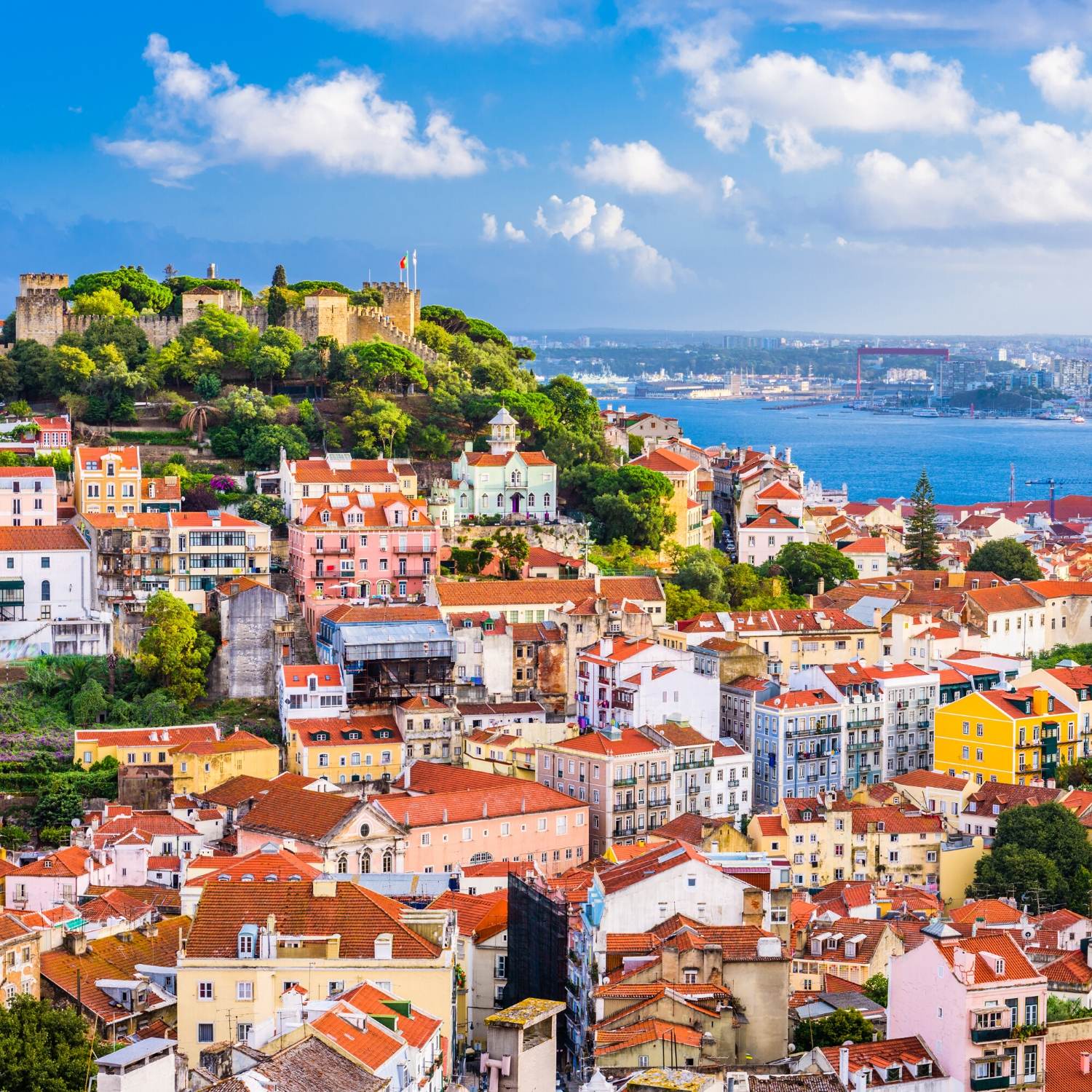
Lissabon (portugiesisch Lisboa [liʒˈβoɐ]) ist die Hauptstadt und die größte Stadt Portugals sowie des gleichnamigen Regierungsbezirks und liegt an einer Bucht der Flussmündung des Tejo im äußersten Südwesten Europas an der Atlantikküste der Iberischen Halbinsel.
Der Handelshafen an der Tejo-Bucht wurde vor der römischen Herrschaft Alis Ubbo genannt. Lissabon, eine Gründung der Phönizier, erhielt zu Zeiten Julius Caesars unter dem Namen Colonia Felicitas Iulia römisches Stadtrecht. 711 fiel der Ort wie der größte Teil der Iberischen Halbinsel an die Mauren; im Kontext des Zweiten Kreuzzugs wurde Lissabon 1147 portugiesisch und damit wieder unter christliche Herrschaft gestellt. Nach der Verlegung des Königssitzes von Coimbra wurde die Stadt im Jahr 1256 unter König Afonso III. zur Hauptstadt des Königreichs Portugal. Um 1500 erlebte Lissabon einen brillanten Aufstieg zu einer der glanzvollsten Handels- und Hafenstädte der damaligen Zeit.
Ein gewaltiges Erdbeben besiegelte im Jahr 1755 den wirtschaftlichen Niedergang der Stadt, der bereits Jahrzehnte zuvor schleichend eingesetzt hatte, und sorgte in ganz Europa für Aufsehen. Im 19. Jahrhundert erlebte Lissabon einen Wiederaufstieg.
In den letzten Jahren ist die Stadt allerdings massiv geschrumpft (von über 800.000 Einwohnern um 1980 auf etwa 500.000[3] um 2017); viele Menschen sind in das Umland gezogen. Lissabon hat mit erheblichen strukturellen Problemen zu kämpfen, unter denen vor allem die marode Bausubstanz vieler Gebäude und der enorme Straßenverkehr herausragen.
Als noch immer größte Stadt Portugals mit dem wichtigsten Hafen, dem Regierungssitz, den obersten Staats- und Regierungsbehörden, mehreren Universitäten und der Akademie der Wissenschaften ist Lissabon heute das politische, wirtschaftliche und kulturelle Zentrum des Landes.
Lissabon ist Sitz einiger Agenturen der Europäischen Union, darunter der Europäischen Beobachtungsstelle für Drogen und Drogensucht und der Europäischen Agentur für die Sicherheit des Seeverkehrs. Auch die Gemeinschaft der Portugiesischsprachigen Länder (CPLP) hat ihren Hauptsitz in Lissabon.
里斯本(葡萄牙语:Lisboa),亦称为葡京,是葡萄牙共和国的首都和最大都市。其位置位于葡萄牙中南部大西洋沿岸,城北为辛特拉山,城南为特茹河出海口,与伦敦、巴黎、罗马等同为西欧历史最悠久的城市。市区面积84.6平方公里、人口547,631人(2011年)。包含卫星城的都会区人口超过300万,相当于葡萄牙人口的27%左右。公元前205年起为罗马人统治,当时的统治者凯撒把这个地区升格为市,并命名为拉丁语:Felicitas Julia(意为“祝贺凯撒”)。1256年起正式成为葡萄牙王国的首都,从此发展成为欧洲和地中海一带重要的港口与贸易城市。地理大发现时代很多航海家都是由里斯本出发到世界不同的地方探险的,此后成为葡萄牙殖民帝国富甲一方的政治与商业中心,现今与波尔图同为葡萄牙两大代表性城市。
リスボン(ポルトガル語: Lisboa IPA: [ɫiʒˈboɐ] (![]() 音声ファイル)[1]、[liʒˈβoɐ] リジュボア[2]、英語: Lisbon IPA: [ˈlɪzbən])は、ポルトガルの首都で同国最大の都市である。市域人口は547,631人を擁し[3]、市域面積は84.8 km2 (33 sq mi)に過ぎないが、そのぶん高い人口密度を保持している。リスボンの都市的地域は行政区としての市域を越えて広がっており、人口は300万人を超え[4]、面積は958 km2 (370 sq mi)[4]を占めており、欧州連合域内では11番目に大きな都市圏 (en) を形成している。約3,035,000人[5][6] の人々が、リスボン都市圏に暮らし、ポルトガルの全人口の約27%を占めている。リスボンはヨーロッパの大都市では最も西にある都市であると同時に、ヨーロッパの中で最も西側に位置する政府首都でもある。ヨーロッパ諸国の首都のなかで唯一の大西洋岸にあるリスボンは、イベリア半島の西側、テージョ川の河畔に位置している。
音声ファイル)[1]、[liʒˈβoɐ] リジュボア[2]、英語: Lisbon IPA: [ˈlɪzbən])は、ポルトガルの首都で同国最大の都市である。市域人口は547,631人を擁し[3]、市域面積は84.8 km2 (33 sq mi)に過ぎないが、そのぶん高い人口密度を保持している。リスボンの都市的地域は行政区としての市域を越えて広がっており、人口は300万人を超え[4]、面積は958 km2 (370 sq mi)[4]を占めており、欧州連合域内では11番目に大きな都市圏 (en) を形成している。約3,035,000人[5][6] の人々が、リスボン都市圏に暮らし、ポルトガルの全人口の約27%を占めている。リスボンはヨーロッパの大都市では最も西にある都市であると同時に、ヨーロッパの中で最も西側に位置する政府首都でもある。ヨーロッパ諸国の首都のなかで唯一の大西洋岸にあるリスボンは、イベリア半島の西側、テージョ川の河畔に位置している。
リスボンは金融や商業、出版、娯楽、芸術、貿易、教育、観光と言った様々な分野で重要な都市であることから、世界都市と見なされている。[7][8] ポルテラ空港は2012年に1,530万人の旅客を扱い、高速道路Auto-estradaや高速列車アルファ・ペンドゥラールによりポルトガルの他の主要都市と結ばれている。[9]南ヨーロッパではイスタンブール、ローマ、バルセロナ、マドリード、アテネ、ミラノに次いで7番目に多くの観光客が訪れる都市で、2009年には1,740,000人の観光客が訪れた。[10]リスボンの総所得は世界の都市で32番目に高い位置を占めている。[11] ポルトガルの多国籍企業の本社はほとんどがリスボン地域に置いており、世界では9番目に多くの国際会議が開かれる都市でもある。[12]
また、ポルトガルの政治の中心でポルトガル政府の首府やポルトガルの大統領官邸が置かれている他、リスボン地域やリスボン県の中心でもある。
世界的にも古い歴史がある都市の一つで、西ヨーロッパでは最古の都市であり現代のヨーロッパの他の首都であるロンドンやパリ、ローマなどよりも数百年遡る。ガイウス・ユリウス・カエサルはフェリキタス・ユリアFelicitas Juliaと呼ばれるムニキピウムを創建し、オリピソOlissipoの名に加えた。5世紀から一連のゲルマン人部族により支配され、8世紀にはムーア人により攻略された。1147年、ポルトガル王国の建国者アフォンソ1世下のレコンキスタでのリスボン攻防戦で、ポルトガルはムーア人からリスボンを奪回する。以来、リスボンはポルトガルの主要な政治、経済、文化の中心となっている。ほとんどの首都と異なり、リスボンのポルトガルの首都としての地位は法令や書面の形式では公式に認められたり確認されていない。首都としての地位は憲法制定会議を通じて事実上の首都としてポルトガルの憲法に定められている。
リスボンには欧州薬物・薬物依存監視センター(EMCDDA)と欧州海上保安機関(EMSA)の2つの欧州連合の専門機関が置かれている。「ルゾフォニアの世界の首都」と呼ばれポルトガル語諸国共同体の本部がペナフィエル伯宮殿に置かれている。ベレンの塔とジェロニモス修道院の2つはUNESCOの世界遺産に登録されている。さらに1994年、リスボンは欧州文化首都になり、1998年にはリスボン国際博覧会が開催された。
Lisbon (/ˈlɪzbən/; Portuguese: Lisboa, IPA: [liʒˈboɐ] (![]() listen))[2] is the capital and the largest city of Portugal, with an estimated population of 505,526[1] within its administrative limits in an area of 100.05 km2.[3] Its urban area extends beyond the city's administrative limits with a population of around 2.8 million people, being the 11th-most populous urban area in the European Union.[4] About 3 million people live in the Lisbon Metropolitan Area (which represents approximately 27% of the country's population).[5] It is mainland Europe's westernmost capital city and the only one along the Atlantic coast. Lisbon lies in the western Iberian Peninsula on the Atlantic Ocean and the River Tagus. The westernmost areas of its metro area form the westernmost point of Continental Europe, which is known as Cabo da Roca, located in the Sintra Mountains
listen))[2] is the capital and the largest city of Portugal, with an estimated population of 505,526[1] within its administrative limits in an area of 100.05 km2.[3] Its urban area extends beyond the city's administrative limits with a population of around 2.8 million people, being the 11th-most populous urban area in the European Union.[4] About 3 million people live in the Lisbon Metropolitan Area (which represents approximately 27% of the country's population).[5] It is mainland Europe's westernmost capital city and the only one along the Atlantic coast. Lisbon lies in the western Iberian Peninsula on the Atlantic Ocean and the River Tagus. The westernmost areas of its metro area form the westernmost point of Continental Europe, which is known as Cabo da Roca, located in the Sintra Mountains
Lisbon is recognised as an alpha-level global city by the Globalization and World Cities (GaWC) Study Group because of its importance in finance, commerce, media, entertainment, arts, international trade, education and tourism.[6] Lisbon is the only Portuguese city besides Porto to be recognised as a global city.[7][8] It is one of the major economic centres on the continent, with a growing financial sector and one of the largest container ports on Europe's Atlantic coast.[9] Additionally, Humberto Delgado Airport served 26.7 million passengers in 2017, being the busiest airport in Portugal, the 3rd busiest in the Iberian Peninsula and the 20th busiest in Europe,[10] and the motorway network and the high-speed rail system of Alfa Pendular links the main cities of Portugal (such as Braga, Porto and Coimbra) to Lisbon.[11] The city is the 9th-most-visited city in Southern Europe, after Rome, Istanbul, Barcelona, Milan, Venice, Madrid, Florence and Athens, with 3,320,300 tourists in 2017.[12] The Lisbon region contributes with a higher GDP PPP per capita than any other region in Portugal. Its GDP amounts to 96.3 billion USD and thus $32,434 per capita.[13][14] The city occupies the 40th place of highest gross earnings in the world.[15] Most of the headquarters of multinationals in the country are located in the Lisbon area.[16] It is also the political centre of the country, as its seat of Government and residence of the Head of State.
Lisbon is one of the oldest cities in the world, and one of the oldest in Western Europe, predating other modern European capitals such as London, Paris and Rome by centuries. Julius Caesar made it a municipium called Felicitas Julia, adding to the name Olissipo. Ruled by a series of Germanic tribes from the 5th century, it was captured by the Moors in the 8th century. In 1147, the Crusaders under Afonso Henriques reconquered the city and since then it has been a major political, economic and cultural centre of Portugal. Unlike most capital cities, Lisbon's status as the capital of Portugal has never been granted or confirmed officially – by statute or in written form. Its position as the capital has formed through constitutional convention, making its position as de facto capital a part of the Constitution of Portugal.
Lisbonne [liz.bɔn]2 (en portugais : Lisboa [liʒˈboɐ]3 Écouter) est la capitale et la plus grande ville du Portugal. Considérée comme une « ville mondiale » selon le classement 2010 du Réseau d’étude sur la mondialisation et les villes mondiales (GaWC)4 comme Taipei, Miami, Varsovie ou Munich, Lisbonne est également le chef-lieu du district de Lisbonne, du Grand Lisbonne et de la zone métropolitaine de Lisbonne. Ses habitants sont habituellement appelés Lisboètes (du portugais lisboeta), mais on rencontre aussi les termes Lisbonnin et Lisbonnais.
D'après le recensement de 2011, la municipalité compterait une population de 545 733 habitants5, répartie sur une surface de 83,7 km2. L'agglomération de Lisbonne (Grand Lisbonne) compte une population légèrement supérieure à 2,042 millions d'habitants (NUTS III), ce qui en fait la 15e agglomération européenne en importance. Son aire urbaine (Région de Lisbonne) compte quant à elle 2 821 876 habitants (NUTS II), représentant 26,7 % de la population portugaise. C'est la ville la plus riche du Portugal, avec un PIB par habitant supérieur au PIB moyen de l'Union européenne.
Située à l'embouchure du Tage, la municipalité est divisée en 24 freguesias (paroisses civiles ou arrondissements). Elle est limitée par les communes de Odivelas et Loures au nord, Oeiras à l'ouest, Amadora au nord-ouest et l'estuaire du Tage (la mer de Paille) au sud-est, au travers duquel, la ville est au contact des municipalités de la rive sud : Almada, Seixal, Barreiro, Moita, Montijo et Alcochete.
Deux agences européennes ont leur siège à Lisbonne : l'Observatoire européen des drogues et des toxicomanies et l'Agence européenne pour la sécurité maritime, toutes les deux avec des projets de nouveaux sièges près du fleuve. L'organisation de la Communauté des pays de langue portugaise a également ses bureaux dans la capitale portugaise.
Lisbona (/liz'bona/; in portoghese: Lisboa, /liʒ'boɐ/) è la capitale e principale città del Portogallo, con una popolazione di circa 506 892 abitanti all'interno dei suoi confini amministrativi, mentre circa 2,8 milioni sono gli abitanti della sua area urbana (undicesima nell'Unione Europea). È la capitale europea più occidentale (isole escluse) e l'unica ad affacciarsi sull'Oceano Atlantico. La città è situata nella parte occidentale della Penisola iberica, presso l'estuario del fiume Tago, ed inoltre la parte più occidentale della sua area urbana è la zona geografica più occidentale dell'intera Europa continentale.
Lisbona è considerata una città globale in virtù della sua discreta importanza in settori come finanza, commercio, editoria, arte, commercio internazionale, istruzione e turismo. È un importante centro economico, con un settore finanziario in crescita ed uno tra i più importanti porti affaccianti sull'Atlantico. L'aeroporto di Lisbona serve circa 20 milioni di passeggeri all'anno e importanti strade e autostrade collegano la capitale alle altre città portoghesi. La città è la settima più visitata nel Sud Europa, dopo Istanbul, Roma, Barcellona, Madrid, Atene e Milano, con 1 740 000 turisti nel 2009. La regione di Lisbona ha un PIL procapite considerevolmente più alto della media nazionale, classificandosi al decimo posto nella UE con 110 miliardi di euro e 39.375€ pro capite, dato del 40% più alto rispetto alla media dell'unione. La maggior parte dei quartier generali delle multinazionali portoghesi è localizzata in città, che è anche il maggior centro politico dello stato, essendo sede del Governo e della Presidenza della Repubblica.
Lisboa (pronunciación en portugués: ![]() [liʒˈβoɐ] (?·i)) es la capital1 y mayor ciudad de Portugal. Situada en la desembocadura del río Tajo (Tejo), es la capital del país, capital del distrito de Lisboa, de la región de Lisboa, del Área Metropolitana de Lisboa, y es también el principal centro de la subregión de la Gran Lisboa. La ciudad tiene una población de 547 773 habitantes y su área metropolitana se sitúa en los 2 810 923 en una superficie de 2921,90 km². Esta área contiene el 20 % de la población del país. Lisboa es la ciudad más rica de Portugal[cita requerida].
[liʒˈβoɐ] (?·i)) es la capital1 y mayor ciudad de Portugal. Situada en la desembocadura del río Tajo (Tejo), es la capital del país, capital del distrito de Lisboa, de la región de Lisboa, del Área Metropolitana de Lisboa, y es también el principal centro de la subregión de la Gran Lisboa. La ciudad tiene una población de 547 773 habitantes y su área metropolitana se sitúa en los 2 810 923 en una superficie de 2921,90 km². Esta área contiene el 20 % de la población del país. Lisboa es la ciudad más rica de Portugal[cita requerida].
El municipio de Lisboa, que coincide con la ciudad propiamente dicha (excluyendo la aglomeración urbana continua, más grande, que la rodea), tiene una extensión de 100,05 km², en los que en 2011 vivían 547 733 habitantes.2 Su densidad demográfica es de 5 474,59 hab/km². El municipio se subdivide en 24 freguesias (parroquias) y limita al norte con los municipios de Odivelas y Loures, al oeste con Oeiras, al noroeste con Amadora y al sureste con el estuario del Tajo. A través del estuario, Lisboa se une a los municipios de la Margen Sur: Almada, Seixal, Barreiro, Moita, Montijo y Alcochete.
Лиссабо́н[4], Лисабо́н[5][6] (порт. Lisboa, МФА (порт.): [liʒˈβoɐ]) — столица, крупнейший город и главный порт Португалии.
Лиссабон является одним из старейших городов мира и старейшим городом Западной Европы, на века превосходя в возрасте такие современные европейские столицы, как Лондон, Париж.
В Лиссабоне средиземноморский климат. В нём самые теплые зимы среди всех европейских метрополий — средние температуры с декабря по февраль составляют 18 °C днем и 11 °C ночью. Типичный летний сезон длится около шести месяцев — с мая по октябрь, хотя и в апреле температура порой достигает 25-32 °C.
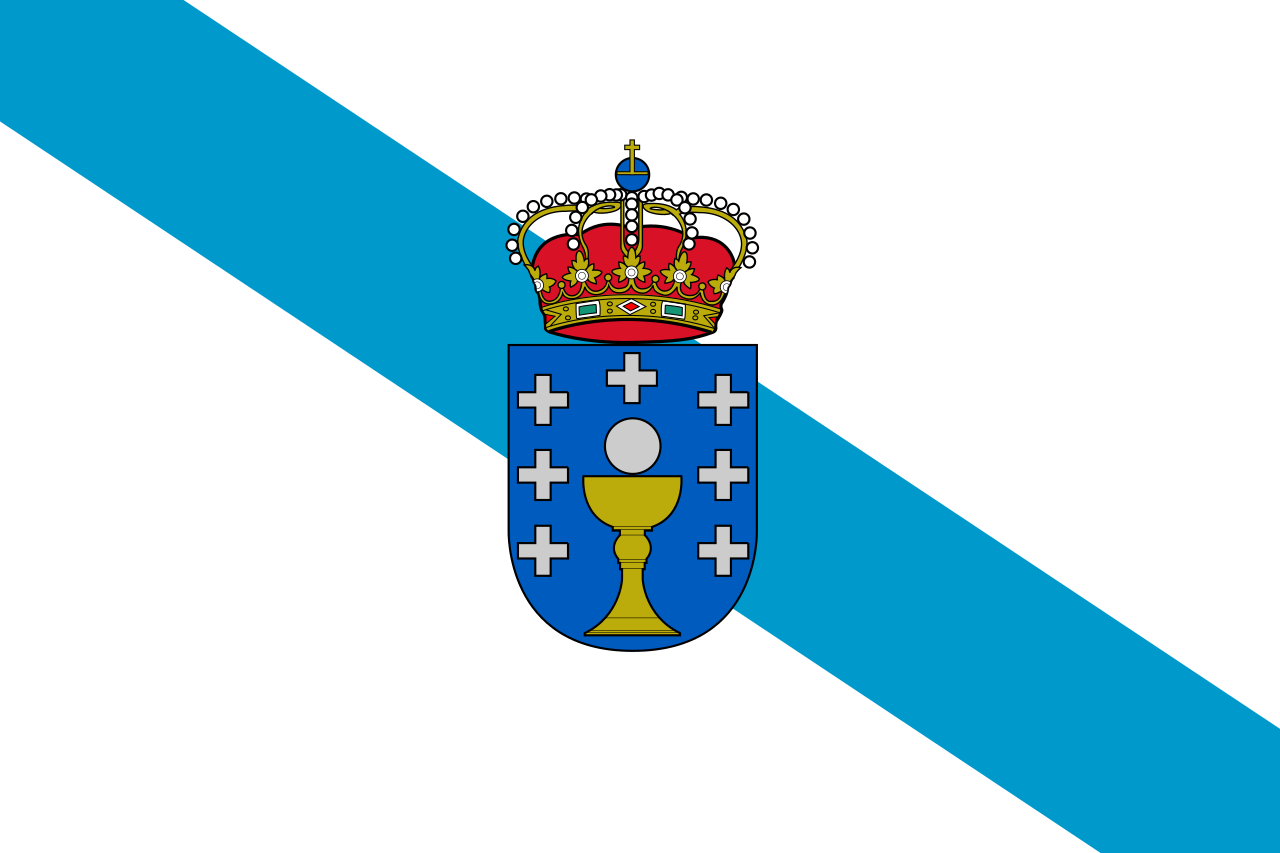 Galicia
Galicia
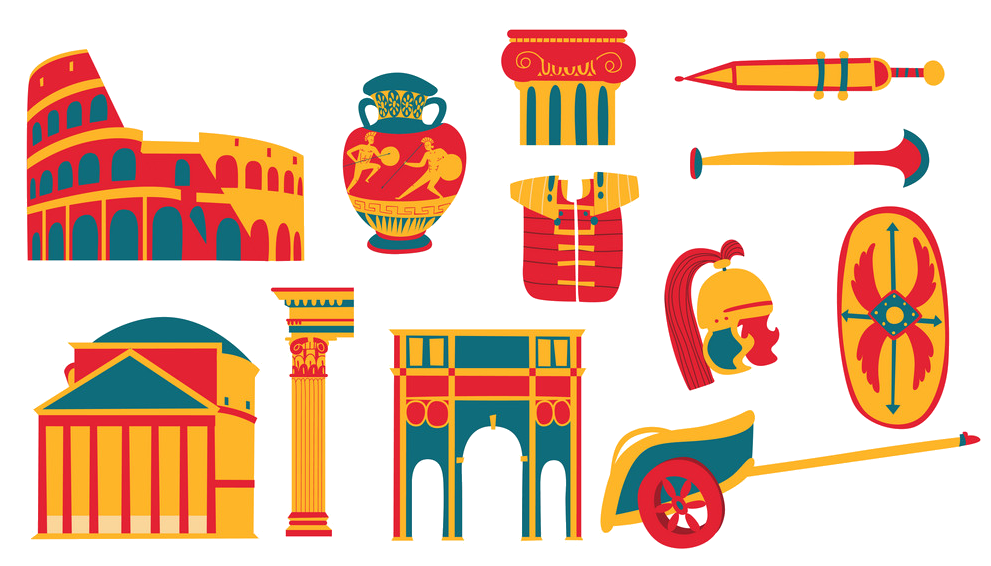 Cities founded by the Romans
Cities founded by the Romans
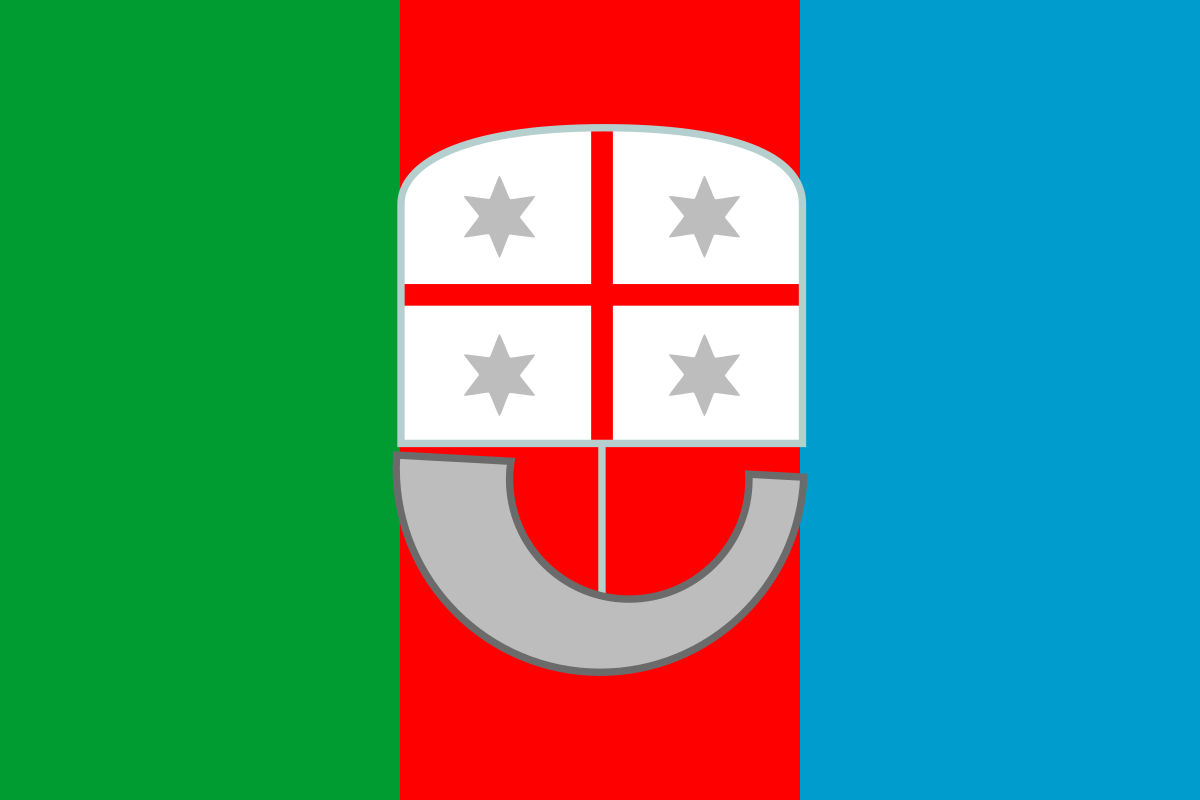 Liguria
Liguria
 Emilia-Romagna
Emilia-Romagna
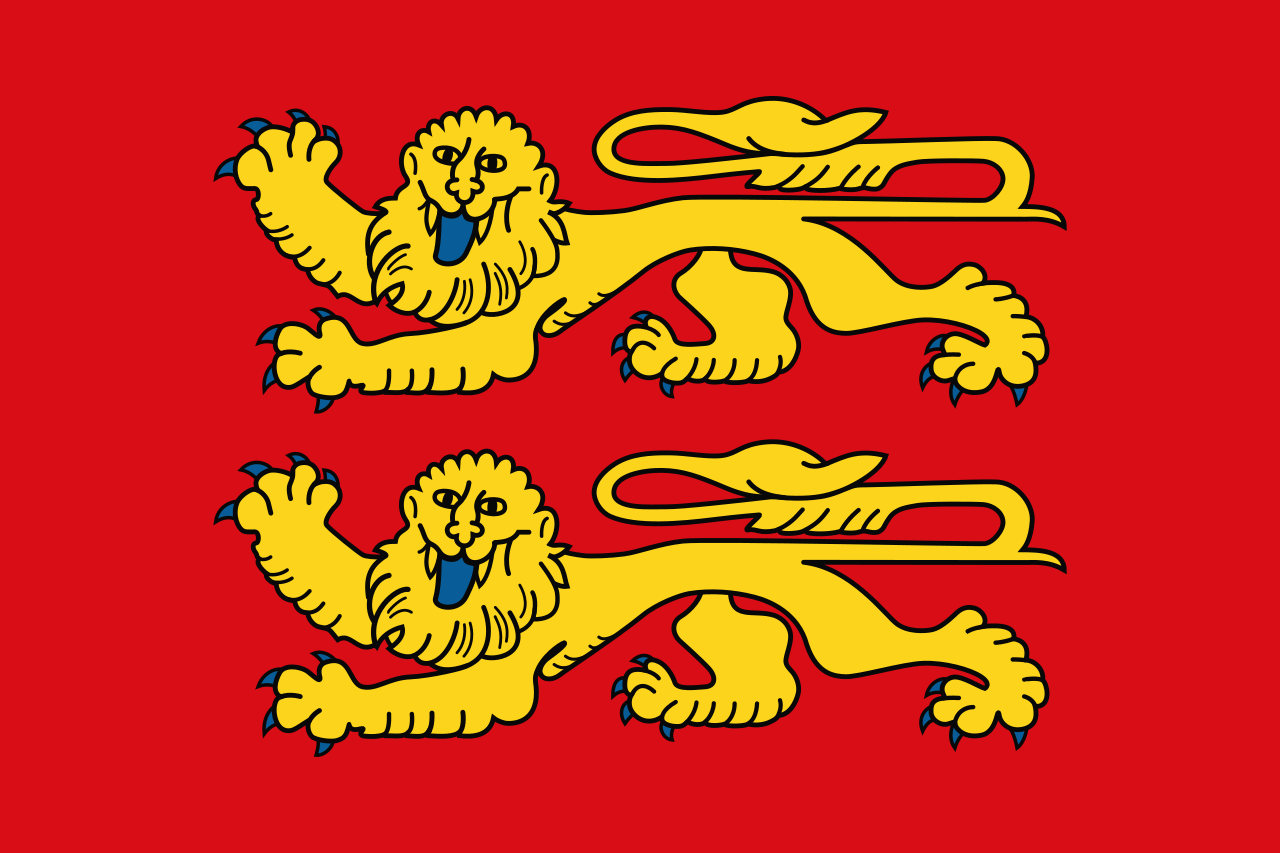 Normandie
Normandie